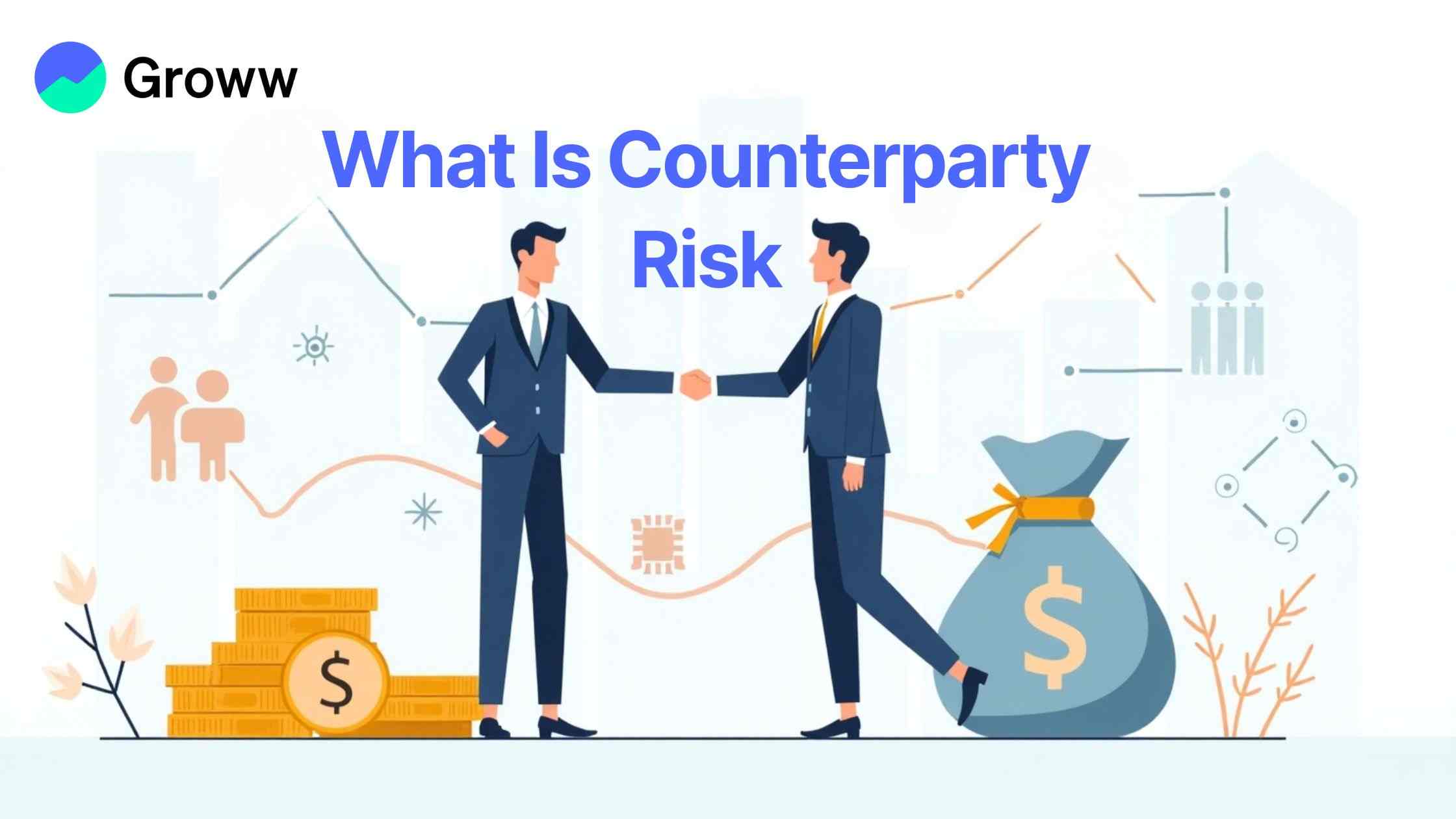What Is a Counterparty?

A counterparty in the stock market is the other party that is involved in any financial transaction. For every seller in the market, there is a buyer and vice versa. This gives rise to the concept of counterparty risk, which can be defined as the chance that any party in a financial transaction will end up defaulting on their commitments. It may occur in diverse scenarios, including derivatives contracts, loans, and other financial agreements.
So, basically, it is the risk that one party in the contract will fail to fulfil their part of the transaction. Counterparty risks are present throughout transactions in multiple categories, like securities, loans, derivatives (like swaps or options), where there may be defaults before the contract matures.
How Counterparty Risk Affects Trading
Now that you have a clear idea of the meaning of counterparty and the associated risks, let us try and understand how it impacts trading. There is the risk that any counterparty fails to deliver securities or funds as agreed, or defaults in a derivative contract before the contract matures. It may lead to financial losses and other issues for the other party in the transaction.
Counterparty credit risk, for instance, is the risk that the counterparty may default before the final settlement of the transaction and the consequent cash flows.
Managing and Mitigating Counterparty Risk
Once you know what counterparty risk is, taking steps to manage counterparty exposure and mitigate the risks is essential. These could include the following:
- Credit Rating Evaluation: This involves assessing the creditworthiness of the counterparty before entering into any transaction. Check the financial strength of the counterparty along with solvency and liquidity ratios, and the ability to meet commitments. Tap credit ratings and credit default swaps (CDS) for gauging the chances of defaults.
- Background Checks: Conduct an extensive background check of the counterparty, evaluating the counterparty’s reputation and overall track record, along with the potential for any misconduct or fraud.
- Collateral: Insisting on collateral from the counterparty to lower the potential losses in case of any defaults.
- Netting: Aggregation of multiple transactions with one counterparty for lowering the total exposure.
- Risk Limits: Setting limits on the amount of overall exposure to individual counterparties is also a potent strategy. Use systems for daily counterparty exposure tracking and reporting, along with risk limit implementation/controls for mitigating possible losses. Early warning systems can also help you immensely in this regard.
- Diversification of Exposure: This strategy aims to avoid concentrating transactions with one counterparty. Hence, it is all about diversifying the portfolio by engaging with multiple parties to lower the potential default risks.
- Negotiation of Terms: Another strategy is negotiating favourable contract terms, including provisions for collateral, early termination, and mechanisms for dispute resolution. Contracts should be suitably documented while offering a thorough definition of responsibilities and obligations.
- Added Measures: You can consider trade credit insurance if possible, offering a safety net against any default by the counterparty. Another option is employing central counterparties or CPP, which help lower risks in derivative transactions.
Role of Clearinghouses in Reducing Risk
Clearinghouses play a vital role in considerably lowering counterparty risks. They function as intermediaries between sellers and buyers across markets. The key role that clearinghouses play is by way of assuming these risks and guaranteeing the completion of trades even if one party defaults on the transaction.
Thus, they are crucial for maintaining the integrity of the market and also for capital protection by acting as intermediaries in every trade. Once the trade is matched, the clearinghouse will transform into the CCP or central counterparty, i.e., the seller to every buyer’s clearing member and the buyer to every seller’s clearing member.
Counterparty Risk in Derivatives and Forex Markets
Counterparty risk is often visible in the forex and derivatives markets, particularly if one of the parties – the seller or the buyer – defaults on the contract. This may lead to a potential loss for the other party in the transaction, and it is particularly relevant in over-the-counter or OTC derivatives, where there are often bilateral trades without intermediaries like clearinghouses. The risk is more pronounced in the case of derivatives since the contract value may change over time. This creates higher potential for losses in case the counterparty defaults before maturity of the contract.
So, if the counterparty defaults, then the other party will have to replace the contract at a market price that may be less favourable, thereby leading to losses. There is thus a need for extensive risk evaluation and analysis of the counterparty’s creditworthiness to mitigate default risks. Netting and collateral are also tools that may be employed along with clearing derivatives via CCPs. The same risk applies to forex trading, since it is also an OTC (over-the-counter) market, which exposes traders to counterparty risks.
Conclusion: Protecting Yourself from Counterparty Risk
To sum up, safeguarding yourself from counterparty risk should ideally be the core focus area. You can use the above-mentioned mitigation tools, like CCPs, collateral, and thorough counterparty checks, to lower these risks before entering any transaction.